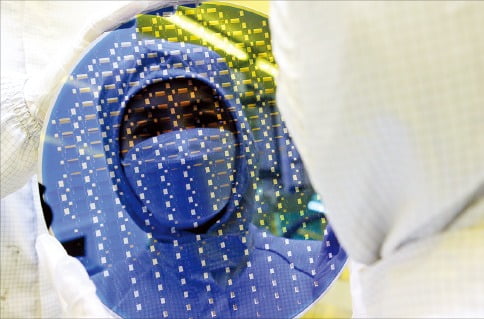
Photo = News 1
Japan’s largest economic magazine, Nihon Keizai Shinmun, diagnosed that the localization of the Korean semiconductor industry had entered the settlement stage after a year and a half of Japan’s export restrictions on core semiconductor materials.
The Nippon Geizai Shimbun reported on the 7th as the top news on the 5th page. Is progressing steadily,” he reported.

Hydrogen fluoride import statistics released by the Korea International Trade Association at the end of last month were presented as evidence. In 2020, the import of hydrogen fluoride from Japan by the Korean semiconductor industry decreased by 75% from the previous year. Compared to before the Japanese government began to regulate exports in July 2019, it was down 90%.
The amount of hydrogen fluoride imported from Japan from 3026 tons in June 2019 decreased to zero in August, just after the enforcement of export regulations. As the Japanese government allowed some exports, imports increased to 793 tons in December of the same year, but there is still a big difference compared to before export restrictions. Last year, the average monthly income was only 400 tons.
Imports of hydrogen fluoride not only from Japan but also from around the world have decreased by 50%. Taiwanese hydrogen fluoride imports, which temporarily increased when Japanese imports were suspended, also decreased by 54% last year. The newspaper analyzed that it was the result of Japan’s hard line of action and Korea’s accelerating localization of semiconductor-related materials and devices.
Soulbrain, invested by Samsung Electronics, started supplying ultra-high purity hydrogen fluoride at the same level as Japan, and SK Materials also started mass production of hydrogen fluoride used in the semiconductor production process.
Samsung Electronics and SK Hynix introduced domestic products in part of the production process in a form that accepted the request of the Korean government. A Samsung Electronics official said, “There were voices saying that they would like to continue using Japanese materials and equipment that they have been using until now, but they could not ignore the intention of the regime.”
The blow went to Japanese hydrogen fluoride manufacturers such as Stella Chemifa and Morita Chemical Industries. As exports to Korea decline, the two companies are losing 6 billion yen (about 63.8 billion won) annually. Stella Chemifa’s shipments of hydrogen fluoride for semiconductors and displays in fiscal year 2019 (April 2019 to March 2020) declined 26%. Last year’s April-September shipments also fell to the same level as in 2019. Morita Chemical said, “We are making up for losses by increasing shipments outside of Korea.”
Imports of photoresist and polyimide fluoride, which were subject to export restrictions along with hydrogen fluoride, did not decrease. It is analyzed that this is because the Japanese government gave export permits for both materials early.
After export restrictions, the Korean government has been accelerating the’post-Japan’ and localization of the entire semiconductor supply chain. This year, a budget of 2.2 trillion won, an increase of 30% from last year, was allocated to subsidize research and development expenses related to semiconductors. The newspaper reported that while DuPont in the US decided to build a new factory while giving tax incentives by designating a high-tech development area, the newspaper reported.
Tokyo = correspondent Jeong Young-hyo [email protected]
Ⓒ Hankyung.com prohibits unauthorized reproduction and redistribution
